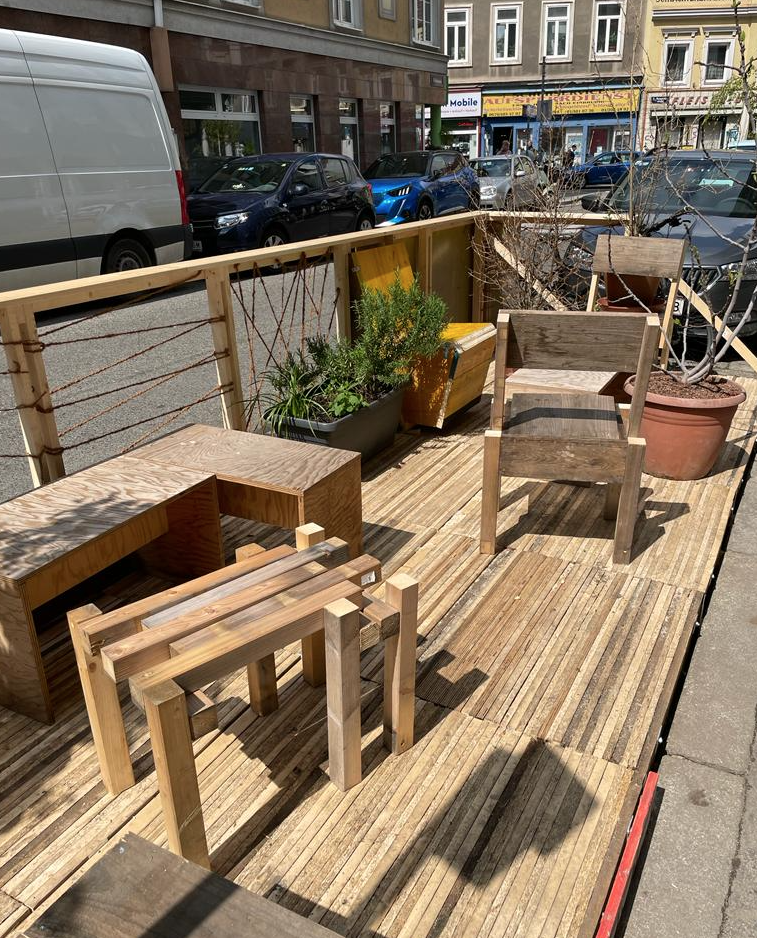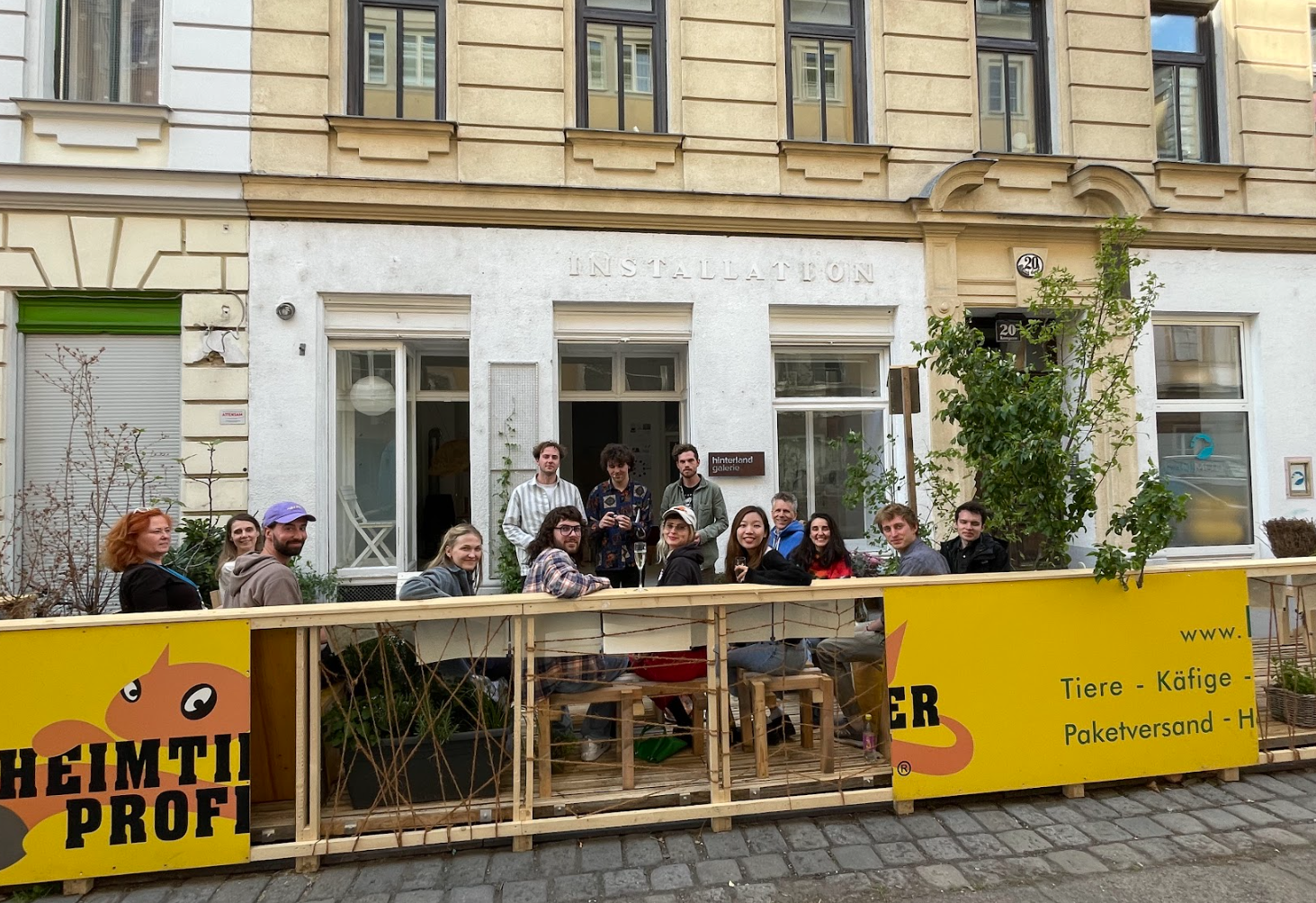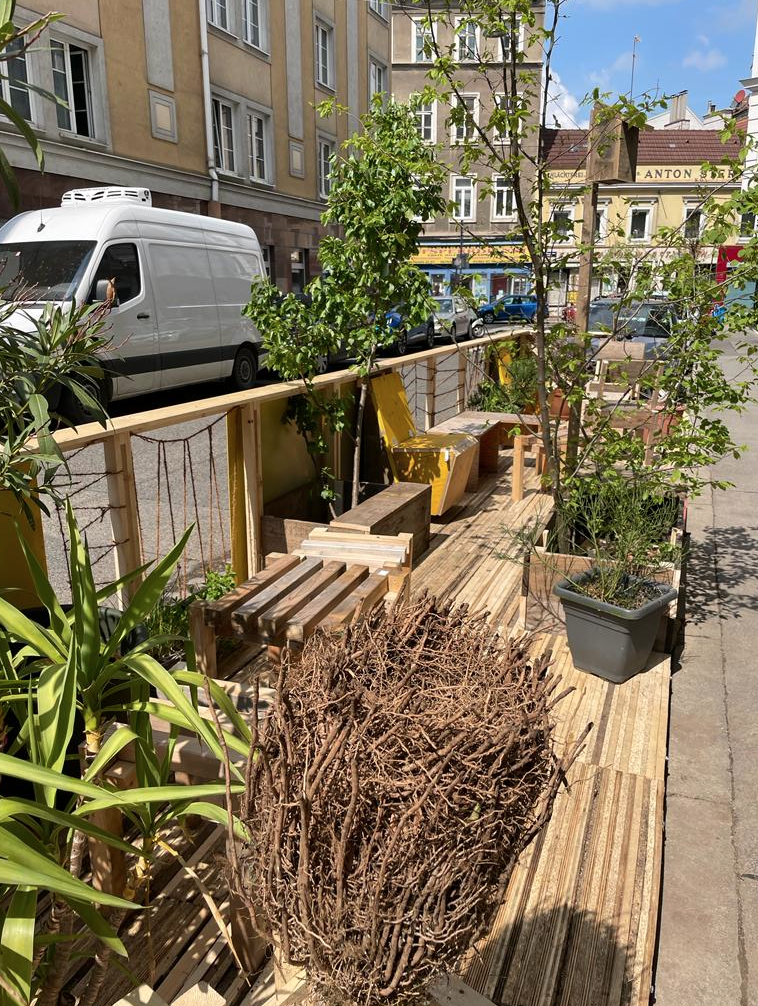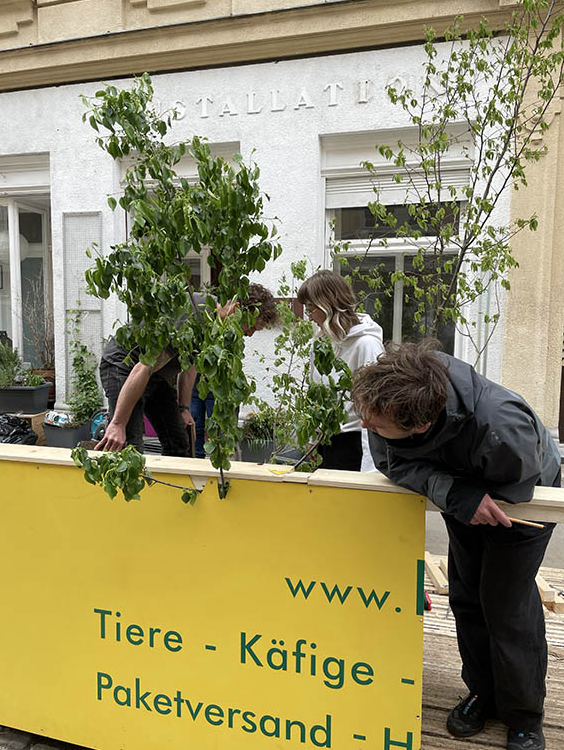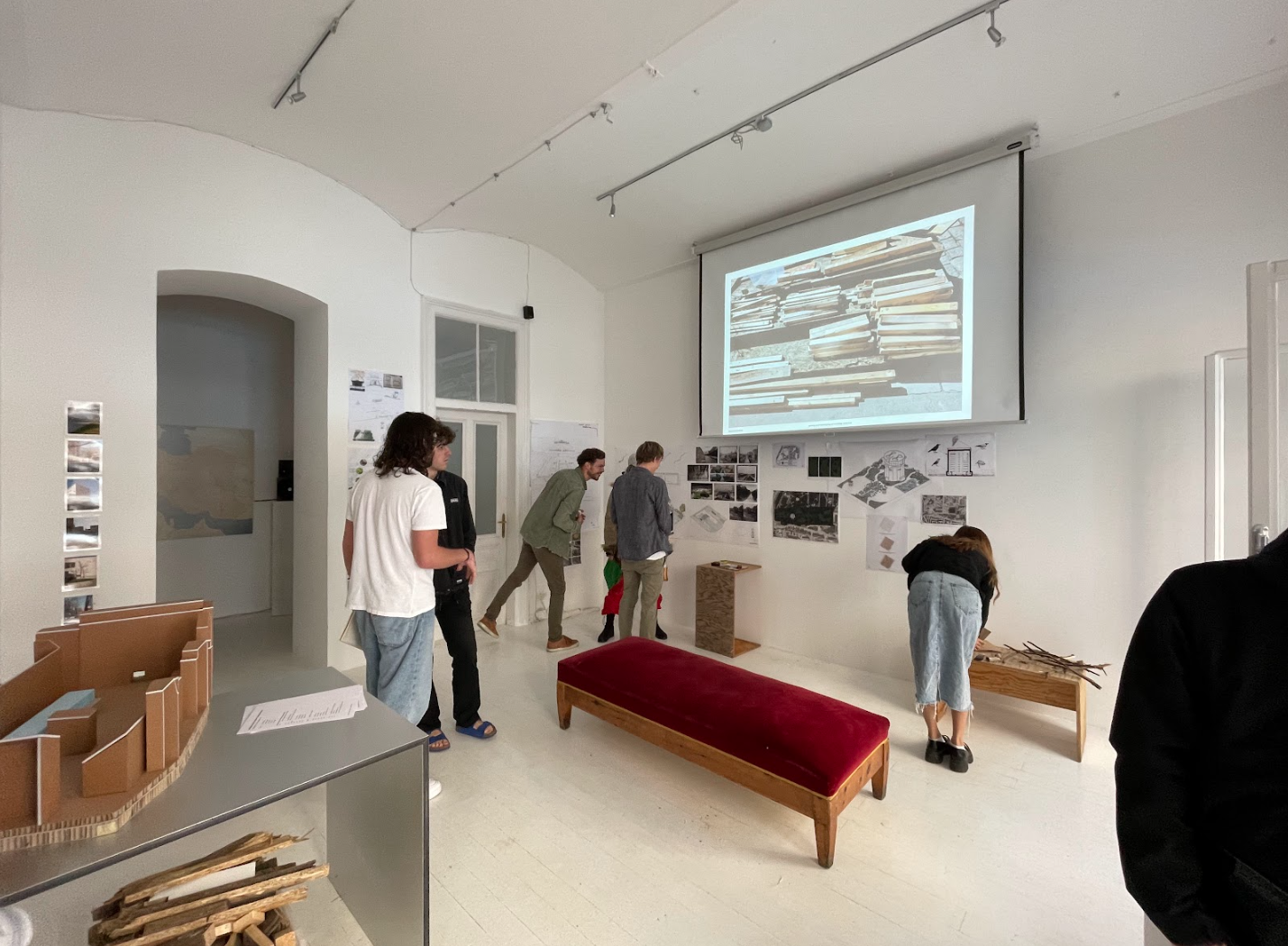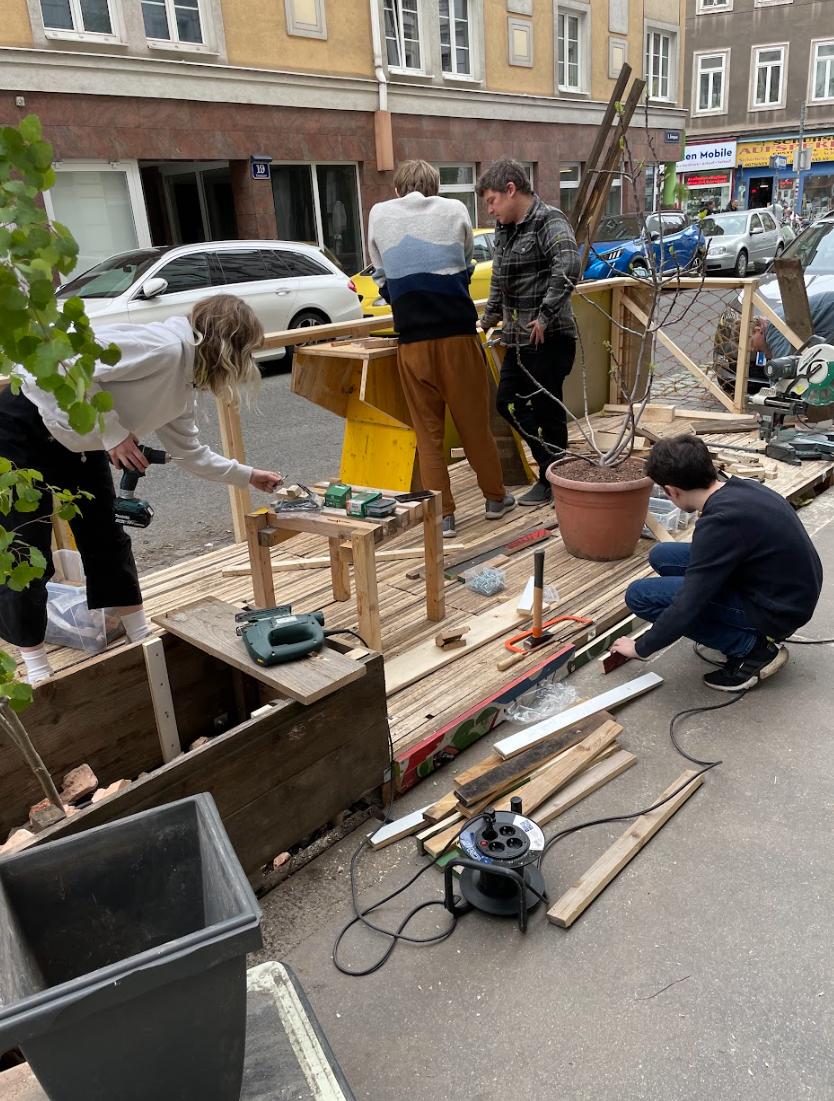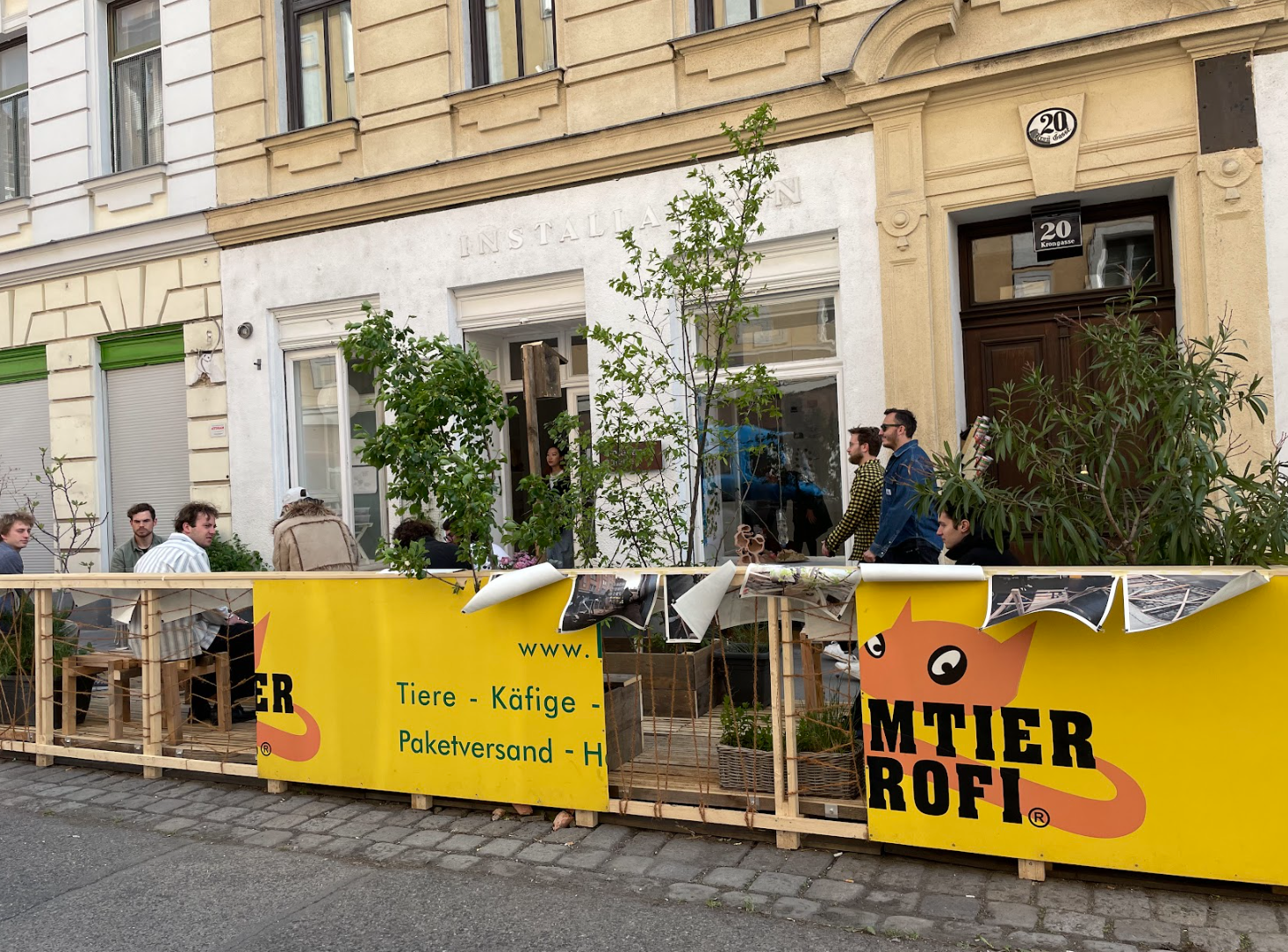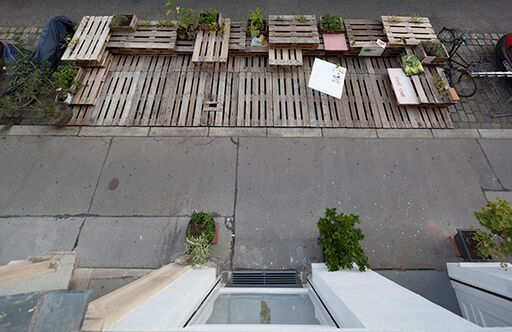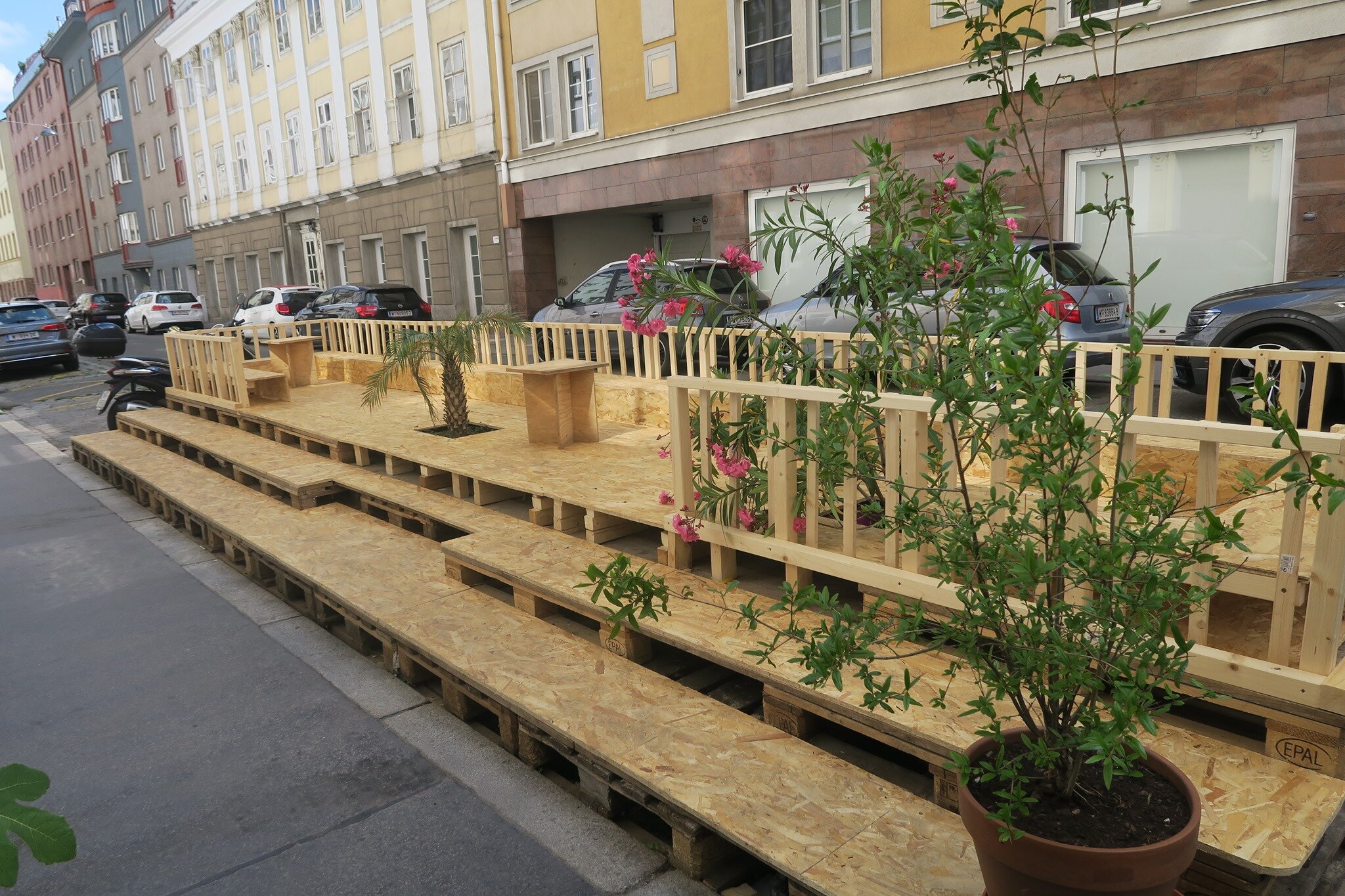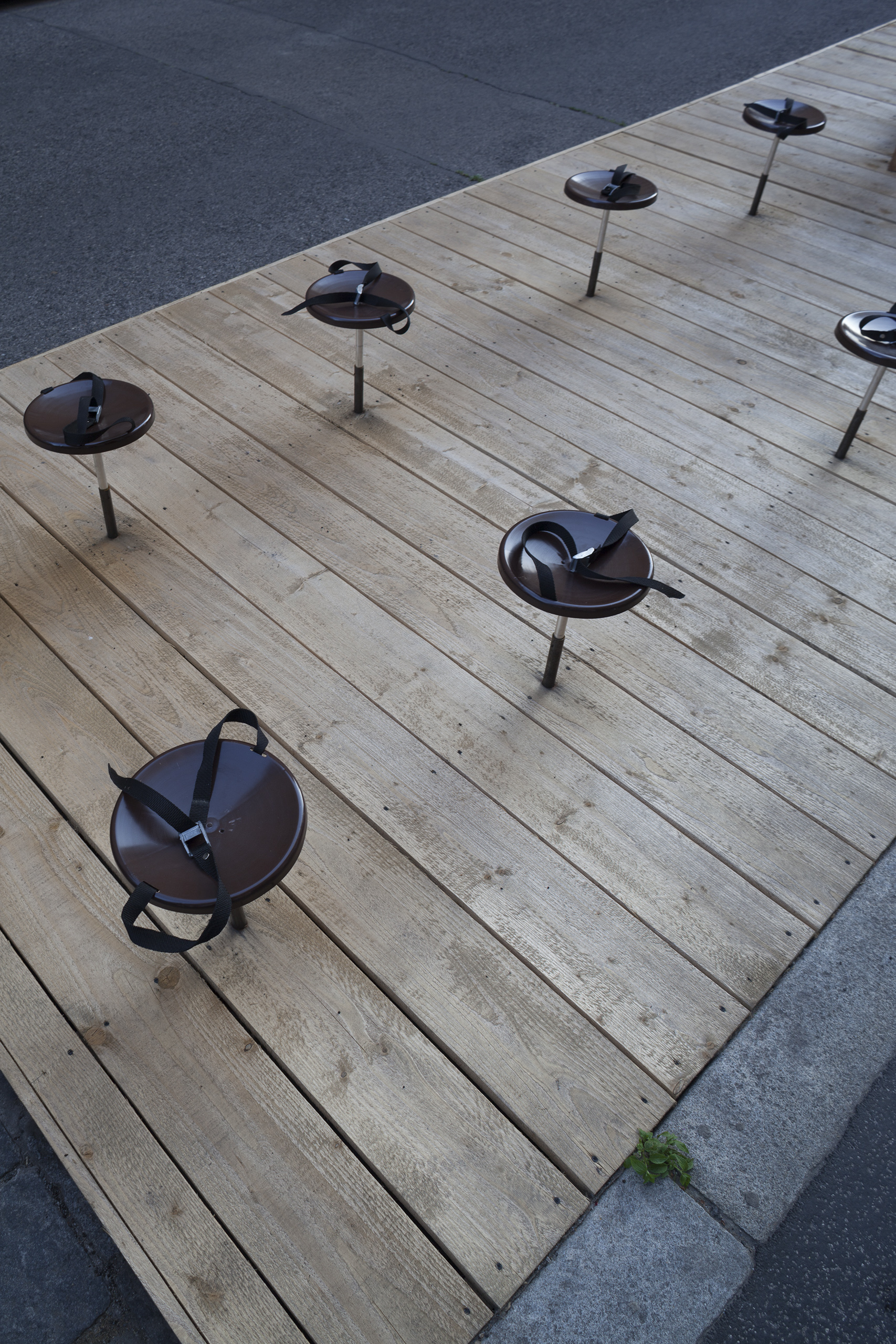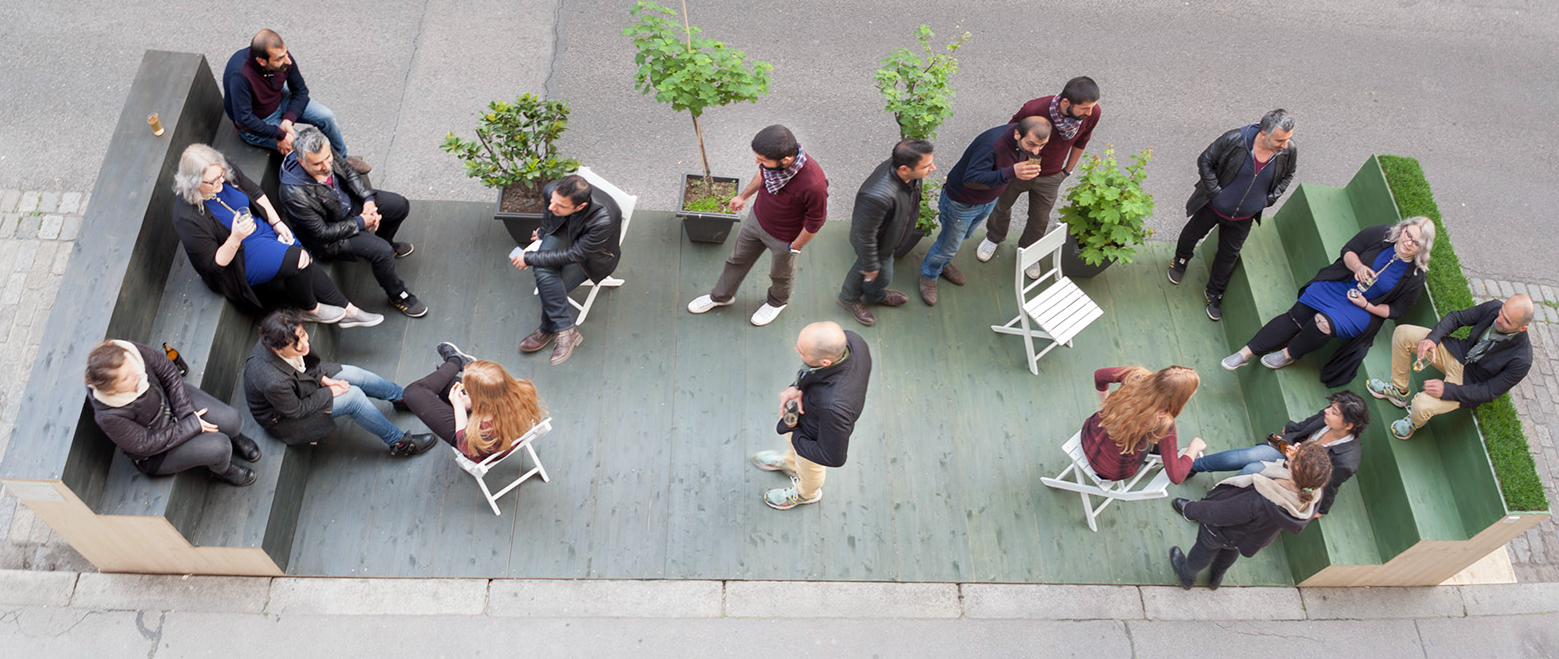2023: BIOLOGISCHER KRONGARTEN by CMT
Dienstag, 20. Juni 2023 ab 18 Uhr
FINAL REVIEWS und ERÖFFNUNG des Krongartens 2023 durch / mit den Studierenden CMT
Ein Projekt der Plattform CMT (Construction Materials and Technology) am Institut für Kunst und Architektur der Akademie der bildenden Künste Wien
Der Krongarten vor hinterland wird heuer von einer Gruppe von zehn Masterstudierenden der Plattform CMT (Construction Materials and Technology) am Institut für Kunst und Architektur der Akademie der bildenden Künste Wien gestaltet. Diese Studierenden sind alle Teil eines Designstudios unter der Leitung von Univ.Prof. Michelle Howard mit dem Titel BUILDING BIODIVERSITY - LEARNING BIODIVERSITY - and CREATING BIODIVERSE ENVIRONMENTS
Der geplante Krongarten wird hauptsächlich aus Fundmaterial aus der unmittelbaren Umgebung bestehen, von denen viele durchdemographische Veränderungen, Gewohnheiten und steigende Mieten unbrauchbar geworden sind. So werden wir beispielsweise neben der Demontage und Wiederverwendung von Materialien des ehemaligen Krongarten auch die Beschilderung von der Fassade der benachbarten ehemaligen Zoohandlung (HEIMTIERPROFI) demontieren und wiederverwenden. Fest eingebettete massive kreisförmige Konstruktionen bieten sowohl einen Ort für das Pflanzenleben als auch einen Ort, an dem Besucher während ihres Besuchs vorübergehend Sachen hinlegen können.
A...kademie der bildenden künste wien Institut für Kunst und Architektur | Institute for Art and Architecture; Platform CMT | Construction, Materials & Technology
Univ.-Prof. Michelle P. Howard mit Dlabačová Nikol, Dumoulin Pierre, Flück Sven, Hofmann Vinzenz, Otrzonsek Lukas, Prochaska Mona, Schafschetzy Moritz, Schwarz Fabian, Tai Ching Man, Wiener Johannes
How it all began…
It all started in 2011 with the idea to use the space in front of the gallery as an open space. Until then there were only cars – parked ones – and we, the ones working behind these cars – would have liked to use the space in a better way. So we just put some chairs outside and a rubber boat as a “swimming pool”. This did not last long, a neighbor came and called the police as this was a parking and not a free space to use... so for the next year we (feinedinge and hinterland) wanted to get a permission to use this parking space for people instead of cars. And then the rally began. It took us 8 months (of discussions and meetings etc.) to get a (paid) permission to use a small space in front of our doors. And so in July 2012 we could open our first Krongarten (as the garden is in Krongasse, we called it Krongarten). We used lots of wooden crates as fence planted full of flowers and vegetables and we constructed a lawn (3 tons of soil and laid turf). Our first Krongarten was ready. And the problems started, but also the joy and happiness of having a public garden instead of parking spaces.
We had several “green” gardens designed until 2014, urban gardening became fashionable – but the gardening was not our main idea. The main idea was to use parking space as public space. To create oasis of communication, where people can meet and talk without consummation. In 2015 we started to invite artists to create a “walkable” sculpture: an open space that can be used by everyone. Since then each year different artists work with the topic to create a piece of art that can be used as well.
Since the beginning the Krongarten is not only used as a public space, but also for concert, talks, dinners, lunches, ... a real oasis for communication, meetings etc.
FACTS
KRONGARTEN
In front of Krongasse 20
From May 1 to September 30 each year
Krongarten 2014
2021/22: Krongarten Palace by Baris Seyitvan
"Sedir" is used both for sleeping and for conversation, by placing it on the roofs and by the water in the hot cities of Kurdistan, which is the geography I live in. It is better known as "diwan" in Europe. Due to the high cost of technological cooling devices, families have continued to use this traditional method for many years. This object,which was used by almost everyone on its roofs due to the hot air, also increased the relationship between the neighbors. Thanks to this object that each owner has made for himself, they strengthen their neighborhood relations. They could talk about their cultural, political and daily problems in this way. I think these neighborhood relationships are in Krongarten.
This resting object, which was made only of wood long years ago, has recently been made of iron. These objects, which were previously made with detailed handwork and show the economic power of families, are nowadays made simply and without any aesthetic concern.
With the construction of this cultural object in Vienna, where the summer months have started to be very hot in recent years, it will be an area for evening conversations, music concerts, artistic and cultural exchanges, as it is used in Kurdistan. Thus, we will move this object, which has been used in the Middle East for centuries, to Vienna.
Curated by Baris Seyitvan
2020: POMEGLOBE by Nives Widauer
In 2020 the Krongarten, designed by Nives Widauer, was all about Pomeglobe.
Pomeglobe is a non-profit peace project with an empha- sis on intercultural dialogue. It examines the story of the pomegranate in different cultures in order to establish the fruit as a symbol for non-violent communication: Show interculturality – spread peace.
Because of its unique form, color and inner nature the pomegranate is a symbol of love, fertility. wisdom, beauty and might and plays a significant role in many religions, kitchens and mythologies worldwide. This, as well as the fact that the pomegranate has its origins in Mesopotamia and spread over the whole world, renders the globalized fruit the ideal emblem to enable and sustain communication between people with different opinions all over the planet.
In order to create public awareness persons of public life will be asked to make their public appearances together with a pomegranate. Moreover, Austrian and Viennese media and press will be contacted engulfing possibilities of cooperation to integrate the pomegranate in their articles. Moreover, social media will be asked to cooperate and provide a pomegranate Emoticon for everyone to download and use.
In times of the corona crisis, which means lockdown and separation in many countries, the awareness and promul- gation of intercultural values is more important than ever. The aim of the project is the establishment of the pome- granate as a symbol for peaceful communication which is accepted and used in every corner of the world.
Grab your pomegranate and spread the idea!
2019: KRONGARTEN by Lucas Schmid, Lukas Weithas and Sebastian von der Thannen
In 2019 three young designers from Vorarlberg - Lucas Schmid, Lukas Weithas and Sebastian von der Thannen - take over with a sculpture dealing with the notion of nature in politics and in public urban space.
2018: Krongarten by Phool Patti Truck Artists
In 2018 we (the great hinterland team) used the old wooden slats to create a platform on our own and invited the Phool Patti Truck Artists from Karachi, Pakistan to create a Truck Artist Krongarten. For their first time they´ve been painting on a floor, and they have brought lot of their Pakistani heritage to Vienna: typical forms of flowers and birds, as well as landscapes and their own Welcome feeling. An intercultural meeting space was being opened in the presence of the Ambassador of Pakistan Ayesha Riaz and the Truck Artists.
2017: Krongarten by David Moises
In 2017 we invited David Moises to find an idea and he immediately sorted out his hundreds of pairs of old skis to create a “traditional Austrian” garden – a platform full of skis from the 80ies – a delight for all Austrian Ski lovers, accurately put next to each other, surrounded by hundreds of pairs of sticks as a fence. A colorful reminder of the old times and also winter!
2016: Krongarten by Vooria Aria
In 2016 Vooria Aria created a delicate sculpture with stairs on each end where people could sit and chat and think about the light changing of colors from grass green to black. A decent reminder of our behavior towards nature and life and death. And the artist even thought of parking spaces for bikes – what a relief in a street full of cars.
2015: Krongarten by Andreas Strauss
In 2015 Andreas Strauss was working with lots of raw wood, the garden should look like huge wood slats being piled up in front of a saw mill. A wonderful natural landscape was created, and a huge fig tree in between – to get some natural shade.

